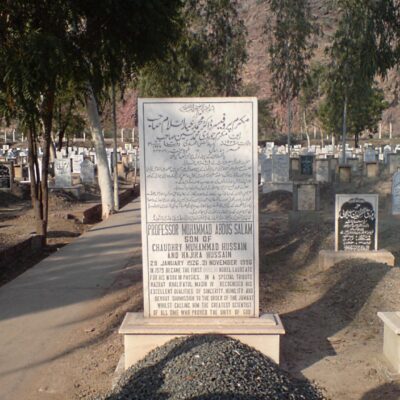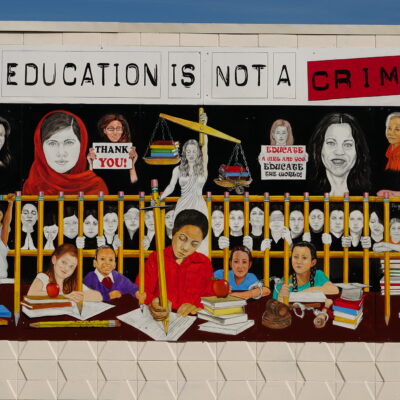
The latest book by political scientist Güneş Murat Tezcür Liminal Minorities: Religion and Mass Violence in Muslim Societies, is a highly thought-provoking study. The author draws on interviews with survivors and court documents, asking why historically non-politically threatening religious minority groups continue to be the subject of brutal instances of organised violence.
Tezcür’s definition of liminal minorities draws on longstanding sociological and anthropological concepts of liminality as a stage of ‘in-betweeness’ and transformation. He uses this concept to define faith groups who have been systematically and historically oppressed and ‘lack proper theological recognition and social acceptance in the eyes of a dominant religion’ (p. 10). With this definition in mind, Tezcür argues that liminal minorities challenge the dominant religious doctrine and moral order, inciting a sense of existential insecurity among the majority. Subsequently, when the dominant group experiences a loss of power, this insecurity can turn into resentment, ultimately fuelling mass violence against marginalised communities.
The unique contribution of this book to the study of violence towards liminal minorities is Tezcür’s argument that faith in an all-powerful God and the subsequent drive to attain the favour of that God and the blessings that may entail is a powerful instigator for extreme violence against liminal minorities. Tezcür explains how a once pluralistic community can turn on itself, singling out individuals based upon religious difference who had lived in relative harmony with the religious majority. The power of religious justification lies in its ability to encourage adherents to suspend their usual morality in favour of showing loyalty to a God with the ability to grant rewards such as eternal life.
This religious motivation is twofold: it provides justification for violence against once-neighbours but also articulates who is the target for such violence. The belief in divine truths that are different to another truth allows for a sense of moral superiority of one religious group over another. Any alternative ‘divine truth’ threatens the very foundations of the religion, inciting a sense of existential conflict within adherents and leading them to condemn any perceived difference to their theological worldview. Occasional increases in the political and social visibility of liminal groups then catalyse long-held resentments and religious difference into direct violence.
Tezcür draws on several case studies to support his argument, the most compelling of which is the case of the Yezidis of Iraq. The primarily (although not solely) Kurdish ethno-religious minority has been subject to a great deal of controversy in relation to its foundation, largely due to its orally transmitted beliefs and rituals. The group has been stigmatised from very early Islamic times, with many Muslims conflating the sacred Yezidi figure of the Peacock Angel (the greatest of seven angels who rule the word) with Iblis (Satan), leading to the community being described as ‘devil worshipers’.
Following the invasion of Iraq by US forces in 2003 there was a rise in Kurdish-Arab tension. The collapse of Saddam Hussein’s regime and subsequent power vacuum facilitated the expression of Kurdish nationalism and led to the establishment of the autonomous Kurdistan Region. Sympathetic Yezidis formed a significant supporting force for Kurdish claims over the highly contested Nineveh province and were subsequently perceived as Kurdish ‘lackeys’ for the declining power of Sunni Arabs and Turkoman Muslims (p. 96) This constituted ideal circumstances for the extremist Sunni group Islamic State to draw on centuries-old religious prejudices to justify genocidal violence against Yazidis in the northern Iraqi town of Sinjar.
The violence included the enslavement and rape of many Yezidi women and children. Yezidi locals were shocked by the participation of their Sunni neighbours, as many as 3,500, in the genocidal behaviour. Interviewees describe many of the locals—some of whom were kirivs (Godfathers) to Yezidi children—turning on them, as underlying religious stigmatisation was ‘activated by preachers and political activists’ (p. 95). Local Sunnis already perceived Yezidis as the primary beneficiaries of increasing Kurdish political power in Sinjar and ‘the very nature of their faith was an anathema especially for Sunni radicalism’ (p. 104). Sunni radicalism centring on the establishment of a Sunni state and the restoration of Sunni dominance led to the Yezidis being targeted by their Sunni neighbours to a far greater and more brutal extent than any other minority inhabiting the area.
The book also explores other contexts of religious violence against liminal minorities. The Anti-Alevi violence in Turkey—particularly the massacres in Maraş in 1978 and Sivas in 1993—had striking similarities to the attacks against Yezidis. In both, religious motives formed the core of the narrative and the increasing visibility of Alevis politically and socio-economically resulted in their stigmatisation through claims of sexual debauchery and heresy. The Alevi community suffered murder and rape, mob attacks, and forced conversions by non-Alevis from within their own neighbourhoods. Tezcür also explores violence against the Baha’is in Iran and the Ahmadis in Pakistan and Indonesia and draws a similar conclusion—that the primary motivator for their persecution is that their religious doctrine poses a theological challenge to the majority religion of their region.
The final chapter of Liminal Minorities is co-written by Tezcür and fellow academic Joshua Lambert and attempts to extend the definition of religious liminality to include groups such as Latter-day Saints, Jehovah’s Witnesses, Rastafarians and Scientologists. While this analysis is interesting in terms of exploring prejudices towards such groups and acknowledges the conflict of ideologies, the increasing secularity of the countries in which these groups are most prevalent leads to questions as to the relevance of such an analysis in terms of political violence. I would argue that in the case of the US, race and socio-economic factors have greater relevance to a study of political violence than liminal minorities. A particular strength of Tezcür’s argument as to the targeting of religious liminalities on the basis of faith is posited on the long-standing misconceptions and prejudices of religious groups. Such a factor is not present in the cases in the final chapter. Perhaps a more relevant example that merits further investigation in a non-Muslim context is the Catholic-Protestant divide in Northern Ireland, which is mentioned briefly.
Tezcür’s book is an analytically rich contribution to the study of religious minorities and mass violence. By introducing the concept of liminal minorities, Tezcür offers a compelling framework for understanding why certain groups become targets of persecution, linking their marginal status to broader societal anxieties and power struggles. The book’s detailed case studies and theoretical insights make it a valuable resource for scholars of political violence, religious studies and Middle Eastern politics.
Main image: A Yezidi fighter. Credit: Kurishstruggle/Flickr. Book image used with permission from the publisher.




